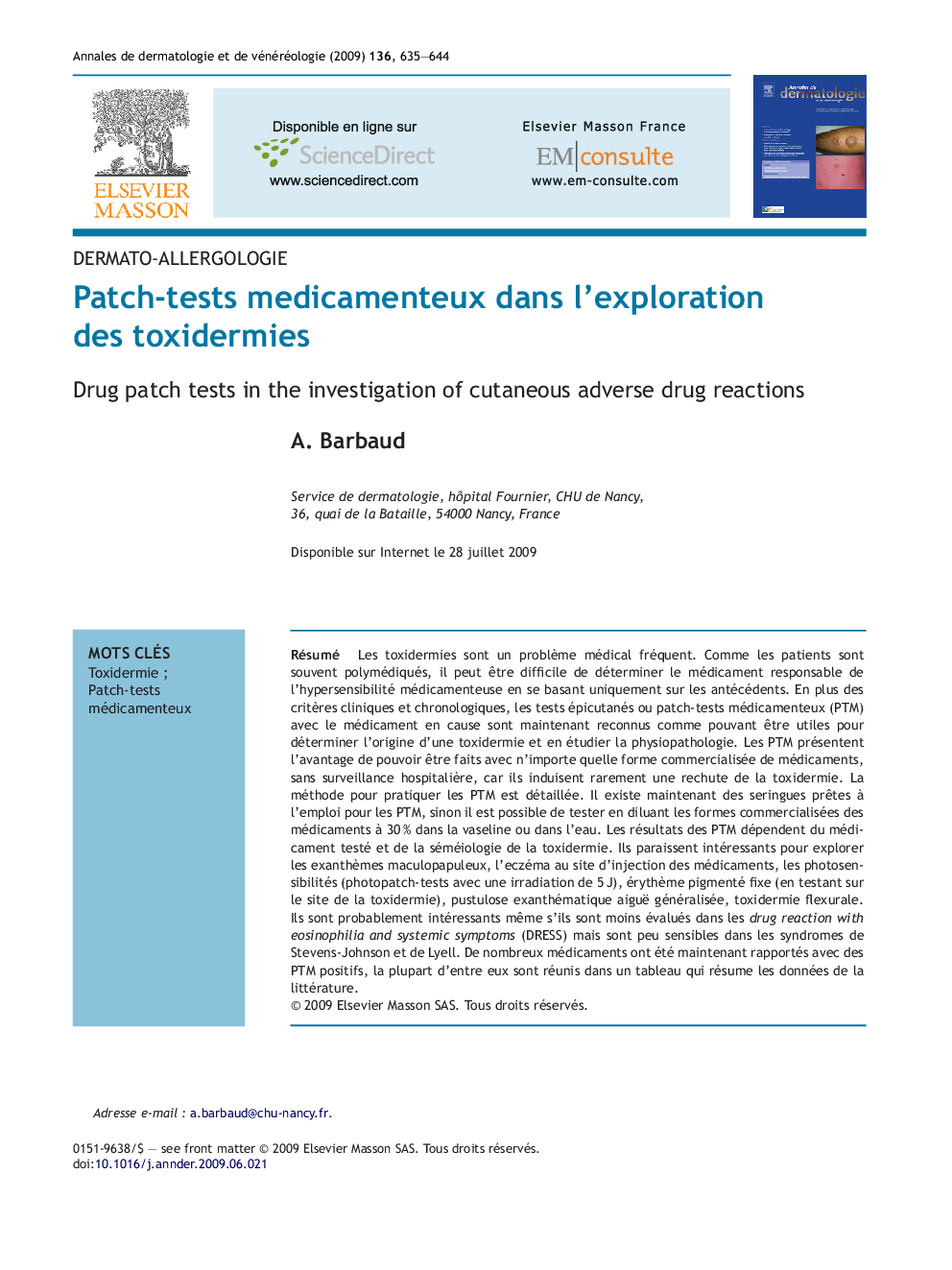| Article ID | Journal | Published Year | Pages | File Type |
|---|---|---|---|---|
| 3189483 | Annales de Dermatologie et de Vénéréologie | 2009 | 10 Pages |
Abstract
Cutaneous adverse drug reactions (CADR) are a frequent problem in clinical medicine. Since patients are often on multiple drug regimes, it is often difficult to pinpoint the relevant drug from history alone. Besides clinical and chronological parameters, patch testing with the suspected compound has been reported as helpful in determining the cause of a CADR and in studying the physiopathological mechanisms involved in such reactions. The key advantage of drug patch tests is that they can be performed using any commercialized form of drugs and without hospital surveillance because they only rarely induce adverse reactions, which in any event are mild. The method for performing drug patch tests has been described, and requisite commercialized material is now commercially available, failing which the best approach is to dilute the drug in its commercialized form at 30% in petrolatum or in water. The results of drug patch tests depend on the drug tested and the clinical features of the initial CADR. They appear to be of value in investigating maculopapular rash, eczema at drug injection sites, photosensitivity (photopatch tests with 5Â J of irradiation), fixed drug eruption (testing at the sequelae site), acute generalized exanthematous pustulosis and symmetrical drug-related intertriginous flexural exanthema. Although less widely used, they are probably also of value in drug reaction with eosinophilia and systemic symptoms (DRESS) but they are of less use in Stevens-Johnson syndrome (SSJ) and Lyell's syndrome. Many drugs have been reported as producing positive patch tests, and most of these are summarized in a summary table of this literature review.
Related Topics
Health Sciences
Medicine and Dentistry
Dermatology
Authors
A. Barbaud,
